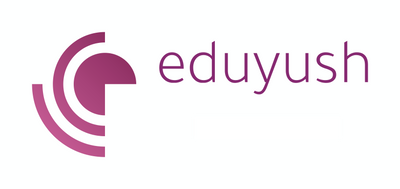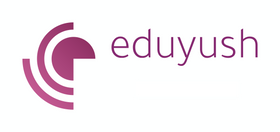HR Full Form & Key Roles Explained Clearly (2025)
HR Full Form: Meaning, Roles & Responsibilities Explained
What is the Full Form of HR?
The full form of HR is Human Resources. HR refers to the department or function within an organisation responsible for managing the employee lifecycle, which includes recruitment, onboarding, training, payroll, compliance, and employee engagement.
Whether in a startup or a multinational company, understanding the HR full form is essential to grasp how organisations build strong teams and foster a positive workplace culture.
Quick Answer
HR stands for Human Resources. It is the division within an organisation responsible for managing all aspects related to people, including hiring, development, employee relations, compensation, and legal compliance. HR plays a vital role in maintaining a productive and compliant work environment.
What Does HR Mean? (Expanded Explanation)
Human Resources (HR) as a concept and organizational function originated in the early 20th century. Initially focused on administrative tasks such as payroll and compliance, HR has now evolved into a strategic department involved in talent management, corporate culture, and organisational growth.
Modern HR departments play a crucial role in shaping a company’s identity, enhancing employee engagement, and driving performance through the effective use of data and analytics. From implementing workplace policies to resolving conflicts, the HR team is the backbone of workforce management.
The HR full form represents more than just a department—it reflects an organization's commitment to its most valuable asset: its people.
Key Responsibilities of HR
- Recruiting and onboarding new employees to meet talent needs
- Developing and delivering training programs for employee growth
- Ensuring legal compliance related to labor laws and workplace safety
- Managing payroll, benefits, leave policies, and compensation structure
- Resolving workplace conflicts and handling disciplinary procedures
- Promoting employee engagement and company culture through events, surveys, and communication
Eligibility and Qualifications to Work in HR
- A bachelor’s degree in Human Resource Management, Business Administration, or Psychology is commonly required
- Specialized certifications like SHRM-CP, PHR, or MBA in HR can strengthen candidacy
- Strong communication, interpersonal, and problem-solving skills are essential
- Understanding of labor law, payroll systems, and conflict resolution adds value
- Prior experience in roles like recruiter, HR coordinator, or talent acquisition specialist helps build the path to HR leadership
Use Cases and Examples of HR in Action
- An HR manager implements a new wellness program to reduce employee burnout
- During a company merger, HR oversees communication and retention planning
- An HR officer sets up diversity and inclusion policies to create a fair workplace
- HR facilitates annual performance reviews to guide promotions and bonuses
- An HR executive collaborates with the CEO and CFO to align people strategy with company goals
Common Misconceptions About HR
- HR isn’t just about hiring and firing—it plays a key role in organizational development
- HR doesn’t only support management; it also advocates for employees’ well-being and rights
- A single person may handle HR departments in small companies, but their impact can be massive
- HR is not a cost center—modern HR teams drive ROI through retention and productivity strategies
HR vs Other Executive Positions
| Position | Full Form | Primary Focus | Key Responsibilities |
|---|---|---|---|
| HR Director | Human Resources | Talent management and organizational development | Recruitment, CTC full form negotiations, employee relations, performance management |
| CEO | Chief Executive Officer | Overall company leadership | Strategic vision, stakeholder relations, organizational direction |
| CFO | Chief Financial Officer | Financial strategy and management | Budget planning, financial reporting, compensation budgeting |
| COO | Chief Operating Officer | Daily operations | Process optimization, operational efficiency, workflow management |
| CMO | Chief Marketing Officer | Marketing and brand strategy | Employer branding support, market analysis, customer engagement |
| CTO | Chief Technology Officer | Technology innovation | HR tech systems, digital workplace solutions, automation tools |
| Legal Counsel | Legal Department | Compliance and risk management | Employment law, policy development, regulatory compliance |
Frequently Asked Questions
1. What is the role of HR in a company?
HR manages recruitment, training, employee relations, payroll, compliance, and company culture to ensure a positive and productive workplace.
2. What's the difference between HR and Personnel?
While Personnel traditionally focused on administrative tasks such as payroll and record-keeping, modern HR encompasses strategic functions, including talent development, culture building, and business partnership roles.
3. Can someone work in HR without a degree?
While many HR positions prefer degrees in Human Resources, Psychology, or Business, some entry-level roles accept relevant experience, certifications, or associate degrees combined with strong interpersonal skills.
4. How does HR handle PIP full form situations?
HR manages Performance Improvement Plans by documenting performance issues, creating development timelines, providing coaching resources, and ensuring the fair and consistent application of policies across all employees.
5. How does HR help employees?
HR advocates for employees by resolving workplace issues, promoting career growth, and ensuring fair treatment through adherence to company policies and labour laws.
6. How does HR determine CTC full form packages?
HR analyzes market salary data, considers internal equity, evaluates job responsibilities, assesses candidate qualifications, and aligns compensation with company budget constraints and performance expectations.
7. Can small companies have an HR department?
Yes. Even startups and small businesses can benefit from HR support, whether through dedicated in-house hires or outsourced services.
Conclusion
The HR full form—Human Resources—symbolises more than just a department; it represents the human connection within an organisation. From hiring the right talent to shaping company culture and resolving conflicts, HR plays a crucial role in driving organisational success. As workplaces evolve, the demand for strategic, tech-savvy, and empathetic HR professionals continues to grow.
To understand more about this vital role, visit HR - Wikipedia. Explore more terminology on Eduyush suchas PIP, CTC, or browse all full forms.
Full form Questions? Answers.
What is a full form?
A full form is the expansion of a shortened or abbreviated form of a word or phrase. It is the complete version of a word or phrase, written out in its entirety. Full forms are often used to help clarify the meaning of acronyms or initialisms, which are shortened forms of words or phrases that are pronounced as individual letters (e.g., FBI, which stands for Federal Bureau of Investigation). Full forms can also be used to provide more information about a word or phrase, or to distinguish between similar words or phrases that have different meanings. For example, the full form of "FAQ" is "Frequently Asked Questions," and the full form of "URL" is "Uniform Resource Locator."
Can I use full form in office?
Yes, you can use full forms in an office setting. In general, it is a good idea to use full forms when you are introducing a new acronym or initialism to your audience, or when the acronym or initialism may be unfamiliar or may be interpreted differently by different people.
However, it is also important to consider your audience and the context when deciding whether to use full forms or acronyms or initialisms, as using full forms too frequently can make text longer and more difficult to read.
Are there any exceptions to using full form?
There are no hard and fast rules for when to use full forms and when to use acronyms or initialisms. However, it is generally a good idea to use full forms when you are introducing a new acronym or initialism to your audience, or when the acronym or initialism may be unfamiliar or may be interpreted differently by different people.
Which is the best way to use full form on social media?
The best way to use full forms on social media is to use them sparingly and to use acronyms or initialisms whenever possible, while also considering your audience and using formatting to make the full forms easier to read.
How can using full forms improve my writing?
Using full forms can improve your writing by providing more context and detail, making your text clearer and more precise, and helping to eliminate confusion or misunderstandings.
What are the benefits of using full form in terms of clarity?
The benefits of using full forms in terms of clarity include providing more context and detail about the meaning of a word or phrase, helping to eliminate confusion or misunderstandings, and making written communication more precise.
What are the benefits of using full form in terms of organization?
One benefit of using full forms in terms of organization is that it can help ensure consistency in written communication by specifying the use of full forms for certain acronyms or initialisms. This can help avoid confusion or misunderstandings about the meaning of words or phrases.
What are the benefits of using full form in terms of overall productivity?
Using full forms can improve productivity by saving time spent on reading and understanding abbreviations, and by reducing the risk of confusion or misunderstanding due to different people using different abbreviations.
List of full forms with explanations
We list down popular full forms with detailed explanations. Click on the link to read












Leave a comment